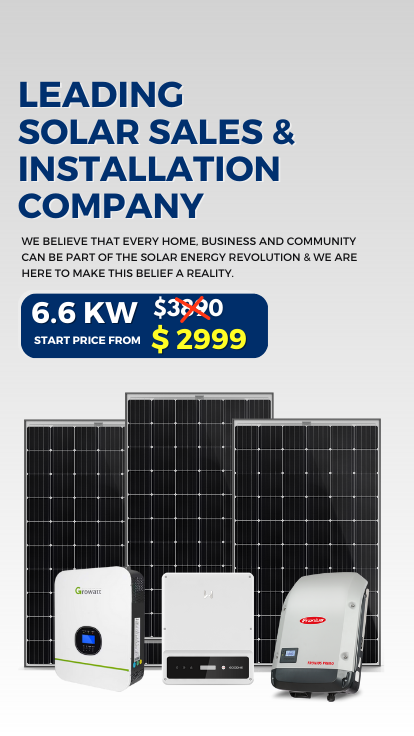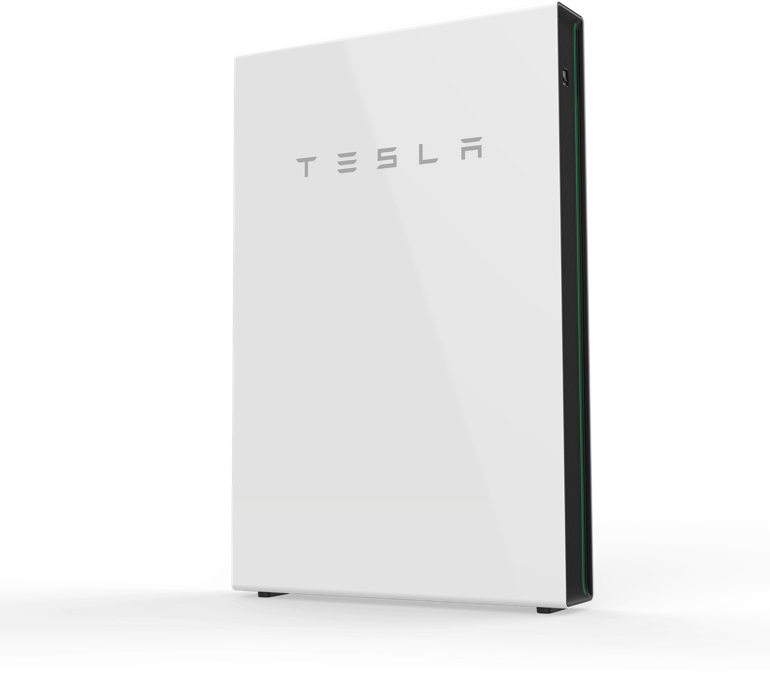Solar Battery Storage in Australia
A Reputable Name in the Clean Solar Energy Sector Is Ozeal Energy – Home & Commercial Solar Panel Installer & Premium Solar Battery Solution provider Company in Australia.

Ozeal Energy – Solar Sales & Solar Panel Installation Company


The day when solar house battery prices will decrease sufficiently for them to provide a reasonable financial return is one that many of us in the solar industry, as well as many owners of solar PV systems, have been eagerly anticipating for a very long time.
These details are updated frequently by Ozeal Energy!

With improved performance and safety, the GoodWe Lynx Home U Series low voltage lithium battery is specifically made for residential applications.

optimising the rate of solar energy self-consumption by storing excess solar energy in the battery during the day and utilising it at night.

The world's top provider of solar battery energy storage systems and services is AlphaESS. AlphaESS focuses on the residential and commercial

A home battery called a Powerwall is made to store energy from solar panels or the grid so you can use it whenever you choose, even at night or during a power outage.
Recap the operation of a solar battery before we start our study. When the sun is out during the day, solar panels produce electricity. The energy demands of the home are met first using this power, and any extra energy is normally exported back into the grid. Some energy distributors provide a “feed-in tariff” to purchase energy from the consumer.
The extra electricity can be used to charge a battery instead of being sent back into the grid. The homeowner can then discharge the home battery storage system in the evening to lower the amount of electricity they must purchase from the grid.
Batteries for solar energy use DC to store energy. DC cables can be used to connect batteries to a hybrid solar inverter. Some batteries, like the Tesla Powerwall, include an integrated inverter and may thus be connected to the main switchboard like any other AC equipment.
A homeowner might gain from tying a solar battery to their solar panel system in a number of ways.
a. lowering the quantity of electricity you purchase from the grid can lower your energy costs.
The first is the financial gain from using less electricity that must be purchased from the grid. Without a battery, a typical domestic solar system will provide coverage for 30% to 50% of family energy needs. This can be extended to 80%, 90%, or perhaps even 100% of household power use using a solar battery.
Keep in mind while calculating your benefits that you must give up some solar feed-in tariff income in order to charge a battery. For instance, your feed-in tariff will be reduced by 10kWh if you charge a 10kWh battery during the day. There will still be an advantage because you always pay considerably more to purchase power than retailers are willing to pay you to sell it to them.
b. During a blackout, keep the lights on.
Blackouts can be extremely annoying and, in some situations, dangerous to one’s health. There are some electrical network segments that are more vulnerable to blackouts than others. The majority of solar batteries on the market today can power lights during a power outage. In order for some battery models to continue supplying power during a blackout, additional hardware is needed.
We observe a desire among certain Australians to become more independent from the power grid as the energy market is expected to collapse in the middle of 2022 as a result of skyrocketing energy prices. You can efficiently control the bulk of requirements and expenditures with solar and batteries.
c. Become more eco-conscious
Although we’ve made huge progress on the rollout of renewable energy infrastructure in Australia, the majority of the power generated on the grid is still from carbon-intensive, fossil fuel sources. Installing solar panels is a great start to reducing your carbon footprint, but adding a solar battery will often more than double the reduction in your carbon footprint.
Solar Battery Virtual Power Plant (VPP)
In recent years we’ve seen the emergence of many different Virtual Power Plant schemes in Australia. For participating homeowners, their solar battery may be discharged or charged by the VPP operator at times when they can make money on the wholesale or ancillary markets.
In exchange for this usage (which is often only a couple of times a year), the VPP operator will offer a benefit to the homeowner which might take the form of one of the below:
Since 2017, Ozeal Energy has tracked the average price of home batteries in Australia using our Battery Price Index database of more than 200 solar providers. Depending on the manufacturer, size, and location, residential solar batteries typically cost between $1,000 and $1,300 per kWh of installed capacity.
a. ROI, savings, and payback period for solar batteries
We’ve put together a typical scenario for an Australian homeowner to show the possible benefits of a solar battery. We’ve used current power and solar feed-in tariff prices, as well as our own model that predicts the project’s results hourly over the next two decades.
If your situation does not fit this example, you can enter your information into our sophisticated solar and battery calculator.
b. Energy usage case study
We used a typical scenario with morning and evening energy usage peaks and a daily average of 30 kWh. Energy prices were anticipated to be 30 cents per kWh flat rate and 5 cents per kWh feed-in tariff.
c. Solutions for Solar and Batteries
We have examined the effects of a 6.6kW solar system and a 10kWh solar battery on a family with daily energy consumption of 30kWh using the graph above. With 6.6kW of solar panels alone, the solar plus battery system would increase from 39% to 66% of the home’s energy needs.
On 98.5% of the days, the battery is fully recharged. We advise adding enough solar panels to at least 80% battery utilisation due to the high cost of batteries.
The longer-established manufacturers on the market, including Tesla, LG, and Sonnen, provide a 10-year battery warranty. This gives us a solid idea of how long they should live. The solar batteries will deteriorate and lose some of their storage capacity throughout that time. Batteries should typically retain 60% to 80% of their nominal capacity after 10 years.
Depending on how much energy the residence uses, the answer to this question will vary. Let’s use the standard example of a Sydney home that consumes 30kWh daily. The owner’s 10kWh solar battery and 6.6kWh solar panel system would provide 66% of the electricity, with the remaining 34% coming from the grid.
We calculate that only 8% of the home’s energy would be supplied by the grid with a larger array of 10kW solar panels and a 20kWh solar battery.

The most effective solar panel is the one that best suits your needs and financial situation, however monocrystalline solar panels are the most prevalent kind of solar panel.

Having finished more than 400 commercial, educational & Governmental solar projects to date, we specialised in large-scale roof mount solar system solutions.

The most popular bundle we have to offer is a 6.6KW solar power system. This solution is the best option for offices, small businesses, and family houses with four bedrooms.

We are the top provider of solar panels in Australia, with experience in the field and several electrical license's and certificates. Searching for Australia's Top Solar Panel Installers? Yes? Then you've come to the right place.
Our team of solar experts will assess your home's solar potential over the course of a brief, 10-minute phone call, and we'll also talk about your current electricity bill.
Our team of system designers will create a system especially for your home. Why do we act this way? We aim to increase the amount of energy you produce!
Our highly qualified Solar Consultant will go over your unique system design, assured energy output, selection of payment methods, incentives, warranties, and more.
Our solar energy specialist will present you with a variety of solar energy options by using NearMap software tool so you may select a final design.
You won't need to worry about anything because our project management team will take care of permits, inspections, connectivity, and more during your project.
Our skilled Technical Team will provide you with lifetime assistance. Make the most of your solar investment and rest easy knowing that you can reach us at any time for top-notch assistance with any questions you may have.



By simplifying solar for customers, we are creating a more sustainable world.
Whether you choose commercial or residential, we assure highest standards of quality, 25 year panel performance warranty, 10 year inverter warranty and 10 year workmanship warranty for every plan.
29.8 kW
49.9 kW
99.6 kW
The typical 6.6kW solar price in Australia for a high-quality installation starts at roughly $3500, while a Smart Solar System starts at $7,900. Your annual energy bill savings from this 6.6kW system will be between $2100 and $2500. It will produce about 25kWh per day.
The highest energy output is typically provided by panels that face north. This is due to the fact that Australia, being in the southern hemisphere, sees a sun that is primarily directed from the north.
A solar system can still help you save money, even though it might not be the sure thing an investment that it once was thanks to prior generous government subsidies due to the lowering cost of solar, rising electricity prices, and competitive feed-in tariffs.
Determining which solar will fit your home requires you to answer 3 questions:
Yes, Ozeal Energy has a 14-year track record of success installing solar panels and solar batteries. In both residential and commercial solar settings, we have installed more than 40,000 solar panels. It is simple to arrange for a Ozeal energy expert to visit your company or organisation without any obligation if you are contemplating commercial solar.
Your individual solar demands will be influenced by factors including where you live, how big your house is, where the roof is located, your budget, and the goals you have for going solar. You should be able to get product recommendations from the solar installation firm you select, along with information on anticipated pricing.
Solar panels have already been installed in over 348,000 homes around New South Wales to reduce electricity costs and increase environmental sustainability. It only makes sense to switch to solar energy given that Australia’s weather patterns are dominated by clear, sunny days. The following factors may affect your particular system when estimating how much money and electricity you will save by adding solar panels on the roof of your Australia home:











Call 1300-879-083 to install rooftop solar panels
Ozeal is Leading the Solar Energy Revolution. We are Contributing Through Providing High standards of Quality and Sustainable Green Energy Solutions to Customers.